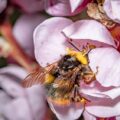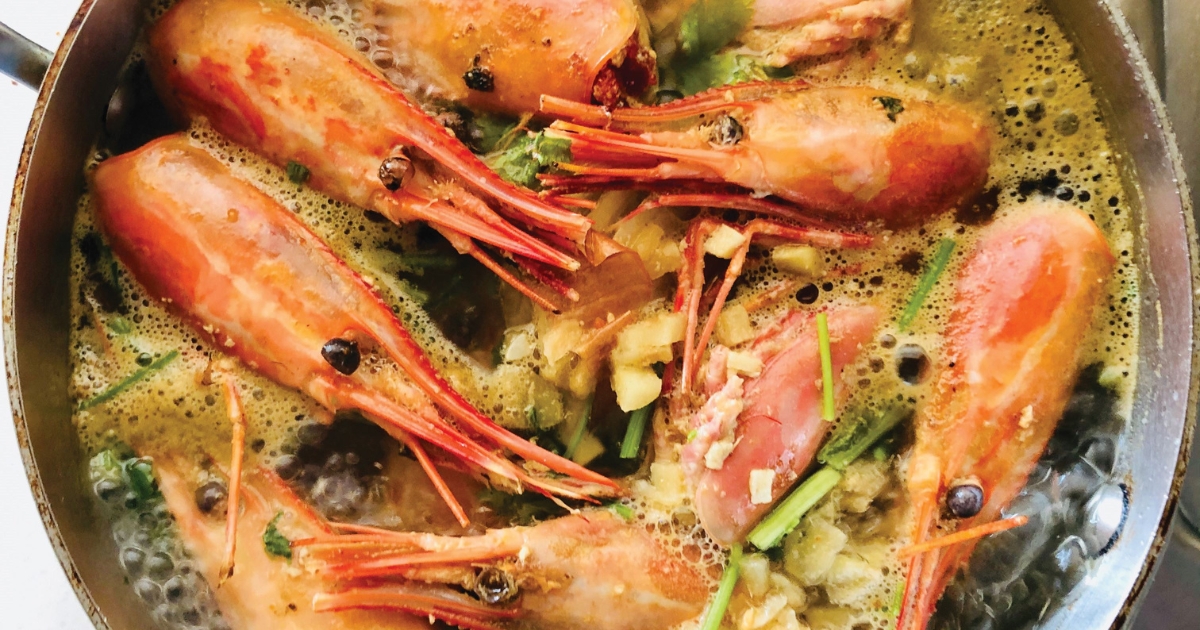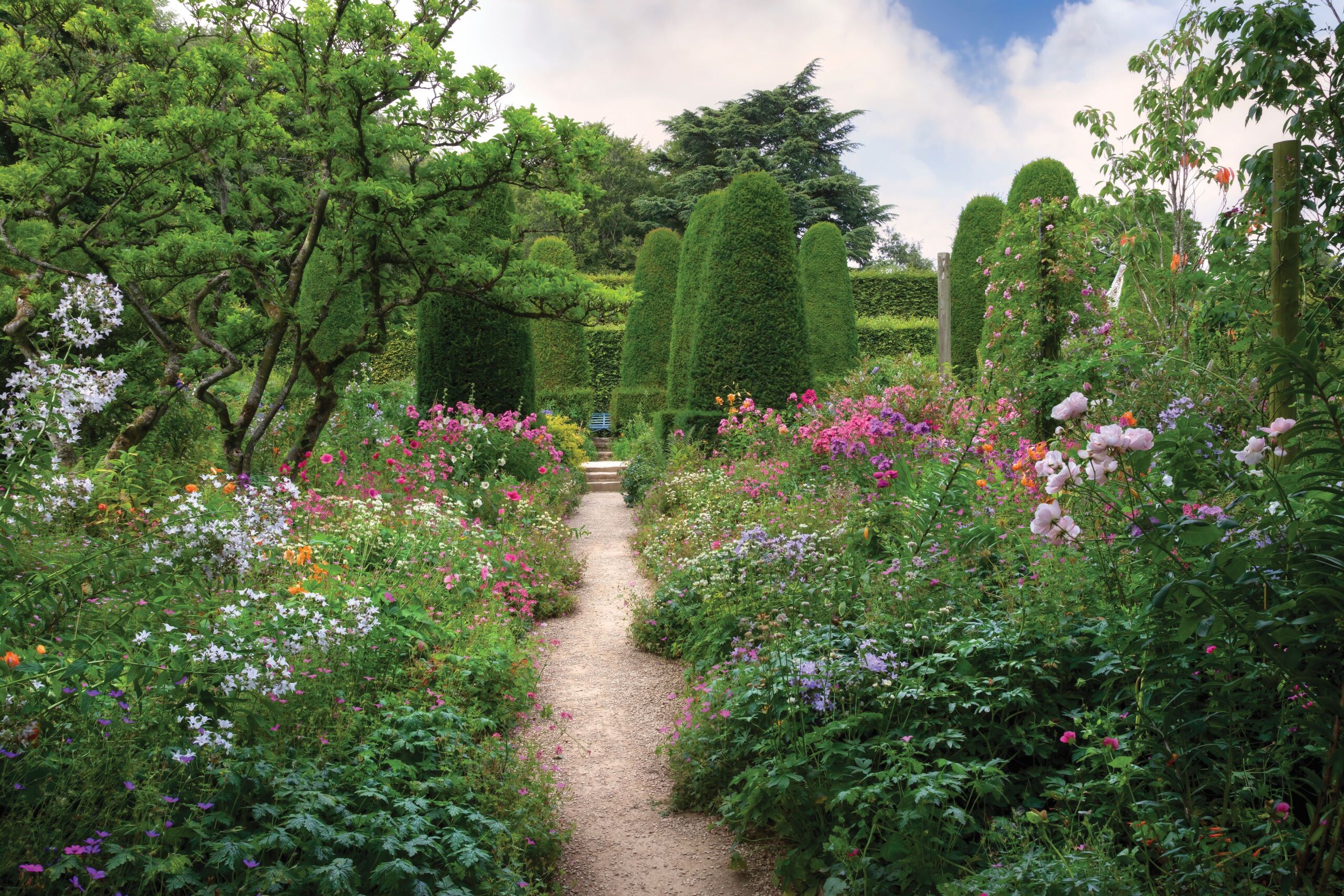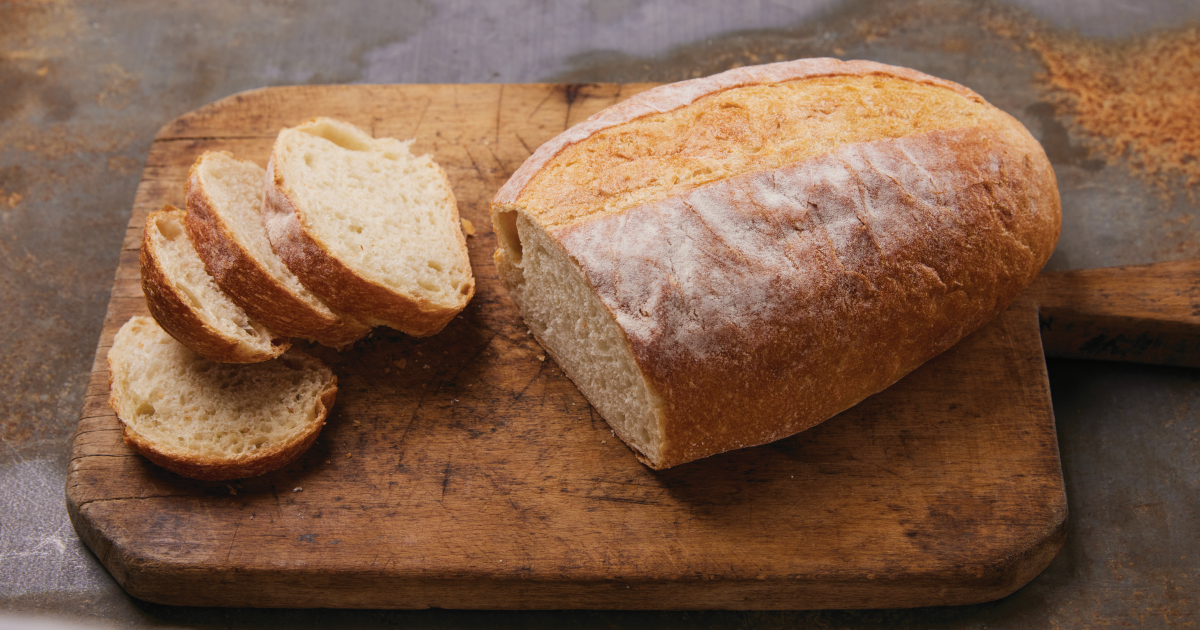By including a variety of resilient species, we can adapt to Mother Nature and ensure our garden stays vibrant and victorious, no matter what the climate throws at us.
Creating a diverse list of the best plants to grow is like assembling a dream team of horticultural superheroes. By including a variety of resilient species, we can adapt to Mother Nature and ensure our garden stays vibrant and victorious, no matter what the climate throws at us. So, let’s embrace the challenge, mix it up, and cultivate a garden that
can weather the storm with style and swagger!
1. Christmas Fern (native) (Polystichum acrostichoides)
We are impressed by the winter hardinessof this delicate-looking plant.
Height – 3’ (0.9m). Spread – 2’ (0.6m).
Culture – part shade to full shade,medium to wet soil. Showiness Impact – silver-coloured fiddleheads in early spring. Hardiness zone: 3.
2. Japanese Painted Fern (Athyrium niponicum)
The contrast of silver and green makes this small fern a garden standout.
Height – 1.5’ (0.45m). Spread – 2’ (0.6m). Culture – part to full shade, deer resistant. Showiness Impact – blooms midspring to late fall. Hardiness zone: 3.
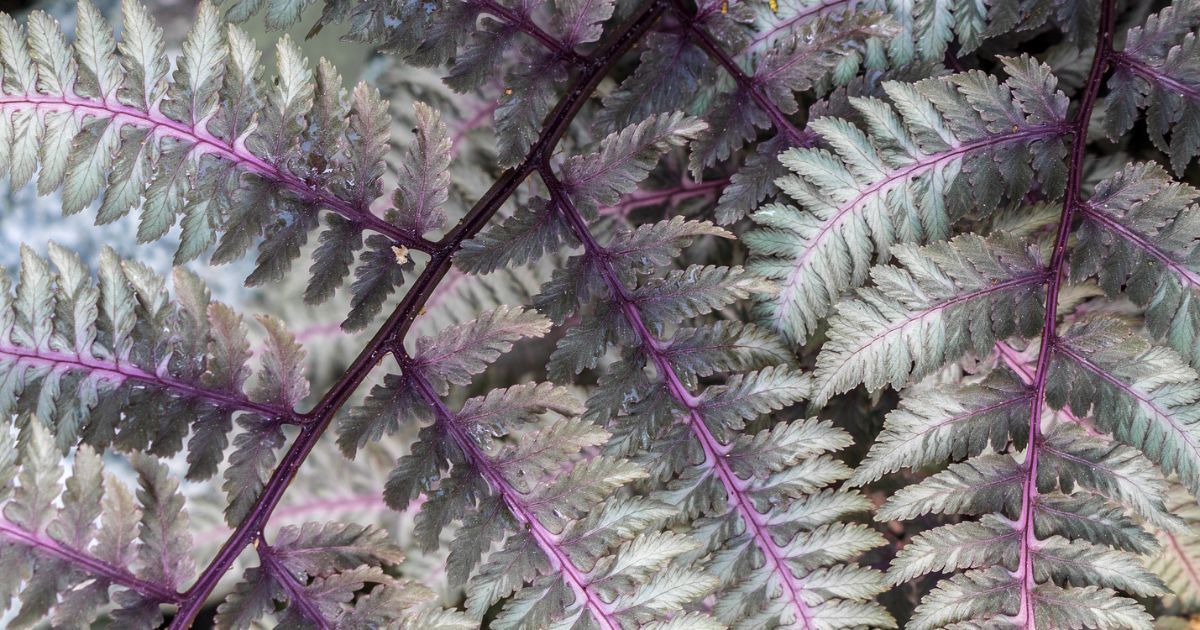
3. Lady Fern (Athryium filix-femina)
Another winter hardy winner in our books.
Height – 2.5’ (0.75m). Spread – 2’ (0.60m). Culture – part to full shade, deer resistant, prefers moist soil. Showiness Impact – blooms mid-spring to late fall. Hardiness zone: 3 (Winnipeg).
4. Ostrich Fern (Matteuccia struthiopteris)
A winter hardy tall fern, best in the back of a shady border.
Height – 6’ (1.85m). Spread – 4’ (1.2m). Culture – part to full shade, deer resistant. Showiness Impact – blooms late spring to mid-fall, showy autumn colour.
Hardiness zone: 3.
5. Dixie Wood Fern (Dryopteris x australis)
Another dominant metre and a half fern for the background of your garden.
Height – 5’ (1.5m). Spread – 3’ (0.9m). Culture – part shade to full shade. Showiness Impact – feathery fronds. Hardiness zone: 5.
With their ability to bloom abundantly between the last frost of spring and the first frost of autumn, annual plants (numbers 6- 15) bring a vibrant colour to the garden, ensuring a captivating display throughout the growing season.
6. Geranium (Pelargonium)
Low maintenance! Allow to dry between watering, give lots of sun and welldrained soil. A winner for two centuries for a reason.
Height – 2’ (0.6m). Spread – 2’ (0.6m). Culture – full sun. Showiness Impact – blooms early June through the first frost. Hardiness zone: N/A.
7. Salvia ‘Victoria Blue’ (Salvia farinacea ‘Victoria Blue’)
Mark grows lots of this plant and enjoys the native bees that visit.
Height – 2’ (0.6m). Spread – 1.5’ (0.45m). Culture – full sun. Showiness Impact – blooms spring, summer, fall. Hardiness zone: N/A.

8. Calendula (Calendula officinalis)
Easy to grow from seed. Easy to save seeds after they flower. Give lots of sunshine and watch them perform all summer.
Height – 1’ (0.3m). Spread – 1’ (0.3m). Culture – full sun to part shade. Showiness Impact – blooms throughout the season, blossoms open and close with the sun. Hardiness zone: N/A.

9. Zinnia (Zinnia elegans)
One of our favourite flowers for cutting AND for colourful summer garden performances.
Height – 3’ (0.9m). Spread – 1.5’ (0.45m). Culture – full sun. Showiness Impact – blooms June until frost. Hardiness zone: N/A
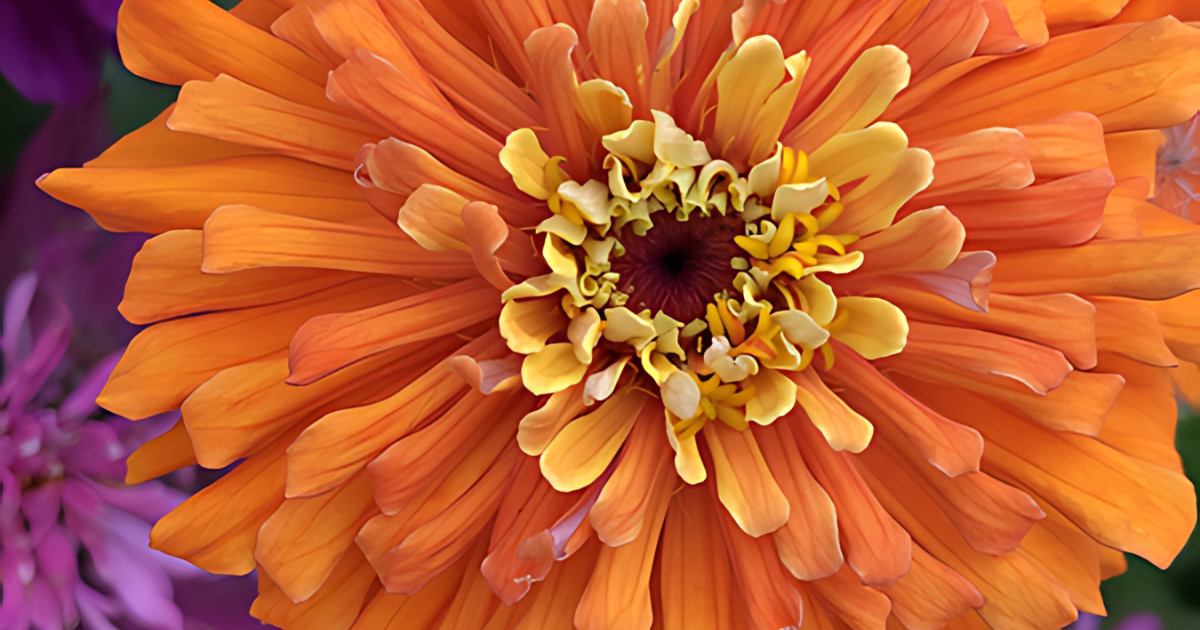
10. Cosmos (Cosmos bipinnatus)
Tall blowsy, great for cutting and a wonderful pollinating annual flower.
Height – 5’ (1.5m). Spread –3’ (0.9m). Culture – full sun. Showiness Impact – bloom summer through fall. Hardiness zone: N/A.

11. Coleus (Coleus scutellarioides)
One of our favourite annuals for shade and containers.
Height – variety from 6” to 3’ (0.15m to 0.9m). Spread – variety from 6” to 3’ (0.15m to 0.9m). Culture – part shade to full shade. Showiness Impact – striking foliage summer through fall. Hardiness zone: N/A.
12. Tuberous Begonia (Begonia × tuberhybrida)
You could say “A rose for the shade.”
Height – 1.5’ (0.45m). Spread – 1.5’ (0.45m). Culture – partial sun to full shade. Showiness Impact – bloom early summer through fall. Hardiness zone: N/A.
13. Cornflower (Centaurea cyanus)
Great pollinator annual. Found in most “wildflower” mixes.
Height – 4’ (1.2m). Spread – 1’ (0.3m). Culture – full sun to partial sun. Showiness Impact – blooms May through mid-July. Hardiness zone: N/A.
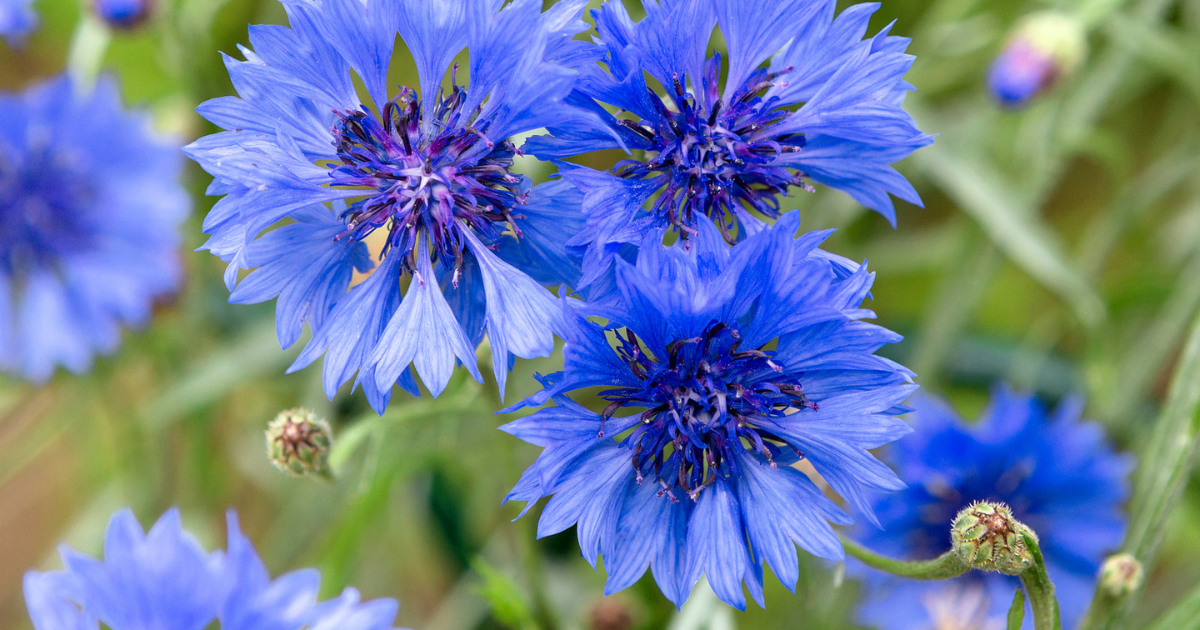
14. Petunia (Petunia x hybrida)
The newer varieties bloom all summer.
Height – 1’ (0.3m). Spread – 4’ (1.2m). Culture – full sun. Showiness Impact – bloom from spring until frost. Hardiness zone: N/A.
15. Aster (Callistephus chinensis)
Our #1 cut flower for the sunny garden.
Height – 3’ (0.9m). Spread – 2’ (0.6m). Culture – full sun to part shade. Showiness Impact – bloom early summer through fall. Hardiness zone: N/A.
16. Native White Cedar (Thuja occidentalis)
A fabulous tree for bird habitat.
Height – 30’ (9m). Spread – 10’ (3m). Culture – part shade to full sun. Showiness Impact – bright new growth in spring. Hardiness zone: 2.
17. Silver Fir (Abies concolor)
One of the most ornamental, large, and fast-growing trees.
Height – 50’ to 130’ (15m to 40m). Spread – 60’ (18m). Culture – full sun to part shade. Showiness Impact – silvery blue-green needles. Hardiness zone: 4.
18. Hinoki Cypress (Chamaecyparis obtusa ‘Nana Gracilis’)
Mark called this “cookie monster” when Ben was a kid to get his attention. It kind of hangs and adds character to any garden.
Height – 6’ (1.8m). Spread –4’ (1.2m). Culture – full sun, low maintenance. Showiness Impact – glossy, dark green foliage year-round. Hardiness zone: 4.

19. White spruce (Picea glauca)
The best native, fast growing specimen evergreens.
Height – 60’ (18m). Spread – 20’ (6m). Culture – full sun, at least 6 hours of direct sunshine daily. Showiness Impact – beautiful year-round colour. Hardiness zone: 2.
20. Juniper (Juniperus)
So many shapes, sizes and colours to choose from. Many Prairie-hardy.
Height – range from 1’ groundcovers to over 40’. Spread – range from 1’ compact varieties to more than 20’. Culture – full sun to part sun. Showiness Impact – over 50 varieties available. Hardiness zone: 3.
21. Borage (Borago officinalis)
Our #1 pick for pollinating flowering plants. Flowers are edible and add blue colour to a salad.
Height – 2’ (0.6m). Spread – 1’ (0.3m). Culture – full sun, will re-seed easily year after year. Showiness Impact – brilliant blue blooms June and July. Hardiness zone: N/A.
22. Thyme (Thymus vulgaris)
Consider replacing a small lawn with creeping thyme. When it flowers, passersby will photograph it for sure!
Height – 1’ (0.3m). Spread – 1’ (0.3m). Culture – full sun, sandy soil. Showiness Impact – blooms spring and summer. Hardiness zone: 5.
23. Sweet basil (Ocimum basilicum)
Demands lots of heat and sun, but rewards with prolific growth and leaves for culinary use.
Height – 2’ (0.6m), pinch often to control growth. Spread – 2’ (0.6m). Culture – full sun, filtered shade during mid-day. Showiness Impact – harvest spring through fall. Hardiness zone: N/A.

24. Rosemary (Rosmarinus officinalis)
Run your hands and fingers through it and smell the rosemary oil. Stimulates your appetite! Not that WE need that.
Height – 1’ (0.3m). Spread – 2’ (0.6m). Culture – 6 to 8 hours of sunlight daily. Showiness Impact – harvest new growth weekly, spring and summer. Hardiness zone: N/A.
25. Sage (Salvia officinalis)
Related to the Native sage used in Indigenous “sage” ceremonies. And very useful in the kitchen.
Height – 2’ (0.6m). Spread –2’ (0.6m). Culture – full sun, well-drained soil. Showiness Impact – harvest before the plant blooms. Hardiness zone: 4.
26. Wealthy Apple (Malus sp. Wealthy)
Great eating, reliable. Prairie hardy for the sunny garden.
Height – 23’ (7m). Spread – 15’ (4.5m). Culture – full sun, prefer fertile, welldrained soil. Showiness Impact – spring blooms followed by summer fruit. Hardiness zone: 3.
27. Clapp’s Favourite Pear (Pyrus communis ‘Clapp’s Favourite’)
Winter hardy and reliable producer.
Height – 12’ (3.5m). Spread – 8’ (2.5m). Culture – full to half-day sun, welldrained soil. Showiness Impact – April blooms, harvest early September. Hardiness zone: 4.
28. ‘Stella’ Sweet cherry (Prunus avium ‘Stella’)
Only self-pollinating sweet cherry that we know of. Not reliably prairie hardy, but there is nothing sweeter than homegrown cherries, in season.
Height – 20’ (6m). Spread – 20’ (6m). Culture – full sun, well-drained soil. Showiness Impact – spring blooms,
summer harvest. Hardiness zone: 5.
29. Plum (Prunus domestica)
Popular Varieties: Damson, Fench, Friar, Japanese Japanese or Italian: you choose. Both produce in profusion. Plant two of the same species but different varieties for pollination.
Height – 10’ (3m). Spread – 8’ (2.5m). Culture – full sun, well-drained soil. Showiness Impact – harvest in summer. Hardiness zone: 4.
30. Apricot (Prunus armeniaca)
Popular Varieties: Royal, Tropic Gold, Blenheim. Self pollinating. More winter hardy than peaches.
Height – 15’ (4.5m). Spread – 10’ (3m). Culture – full sun, wrap in burlap with winter protection. Showiness Impact – harvest late July to August. Hardiness zone: 6.
Spring and summer bulbs (plants 31 to 37) are a gardener’s secret weapon, bursting with vibrant colours and
enchanting blooms. These bulbs bring a sense of anticipation and joy as they awaken after the winter slumber, adding a touch of magic and creating a stunning display that will leave you and your garden guests in awe.
31. Daffodil (Narcissus pseudonarcissus)
Deer resistant, early season blooming and Mark’s favourite cut flower. Some varieties get better year to year.
Height – 1’ (0.3m). Spread – 0.5’ (0.15m). Culture – full sun, partial sun. Showiness Impact – early, mid-spring. Hardiness zone: 5.

32. Triumph Tulip ‘The Mounties’ (Tulipa)
A gorgeous pink/red triumph tulip. Flowers mid season. Grows in all zones up to zone 3. Prairie hardy and the finest sign of spring we can imagine.
Height – 2’ (0.6m). Spread – 0.5’ (0.15m). Culture – full sun to partial shade. Showiness Impact – blooms late spring/early summer. Hardiness zone: 3.
33. Crown Imperial Fritillaria (Fritillaria meleagris)
Deters moles and voles. Produces an unusual, umbrella-shaped canopy of colour, often orange.
Height – 3’ (1m). Spread – 0.8’ (0.24m). Culture – full sun to part shade. Showiness Impact – bloom mid-spring. Hardiness zone: 3.

34. Blue bells (Scilla siberica)
Reliable, early spring performers. Multiply over the years.
Height – 15cm. Spread – 9cm, proliferates quickly. Culture – full sun to part shade, well-drained soil. Showiness Impact – early spring blooms. Hardiness zone:3.
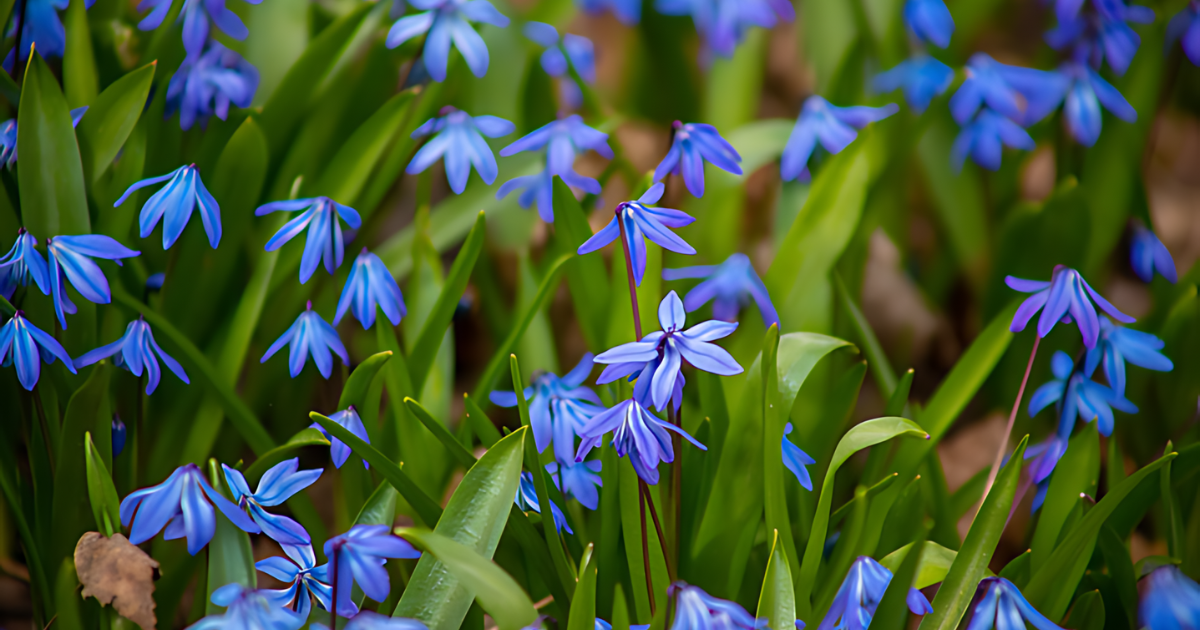
35. Snowdrops (Galanthus woronowii)
“Hello spring!” lifts you up any day of the week.
Height – 0.5’ (15cm). Spread – 0.15’ (5cm). Culture – sun to partial shade. Showiness Impact – very early spring blooms. Hardiness zone: 3.

36. Gladiolas (Gladiolus × hortulanus)
Easy to grow, just plant direct into well drained soil. Great for cutting.
Height – 1.5’ (0.5m). Spread – 0.3’ (0.1m) Culture – full sun to part shade. Showiness Impact – mid to late summer blooms. vHardiness zone: 3. Lift bulbs in fall. Store indoors.
37. Dahlia (Dahlia pinnata)
We find it hard not to smile when we look at dahlias in bloom.
Height – range in size from 1’ to 4’ (0.3m to 1.2m). Spread – range in size from 1’ to 2’ (0.3m to 0.6m) Culture – full sun. Showiness Impact – midsummer blooms to the first frost. Hardiness zone: 3. Lift bulbs in the fall and store indoors.
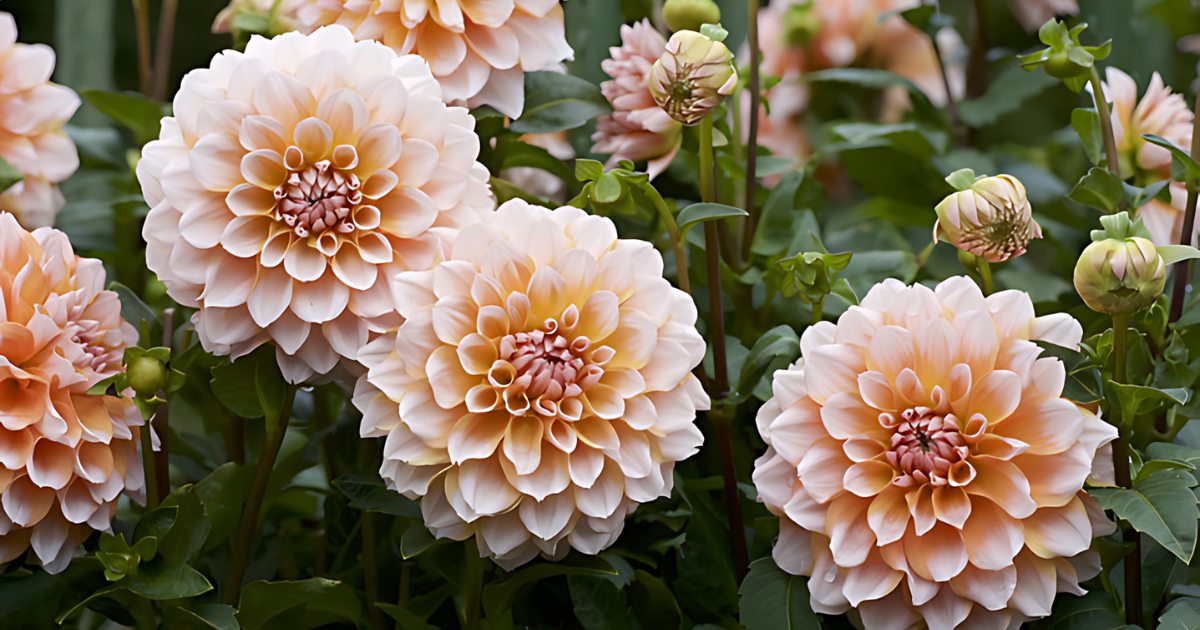
38. Abraham Darby – David Austin rose (Rosa auscot)
Check out the entire David Austin family of roses. Made famous for antique fragrance and modern insect and disease resistance.
Height – 5’ (1.5m). Spread – 5’ (1.5m). Culture – full sun. Showiness Impact – repeat flowering through summer months. Hardiness zone: 5.
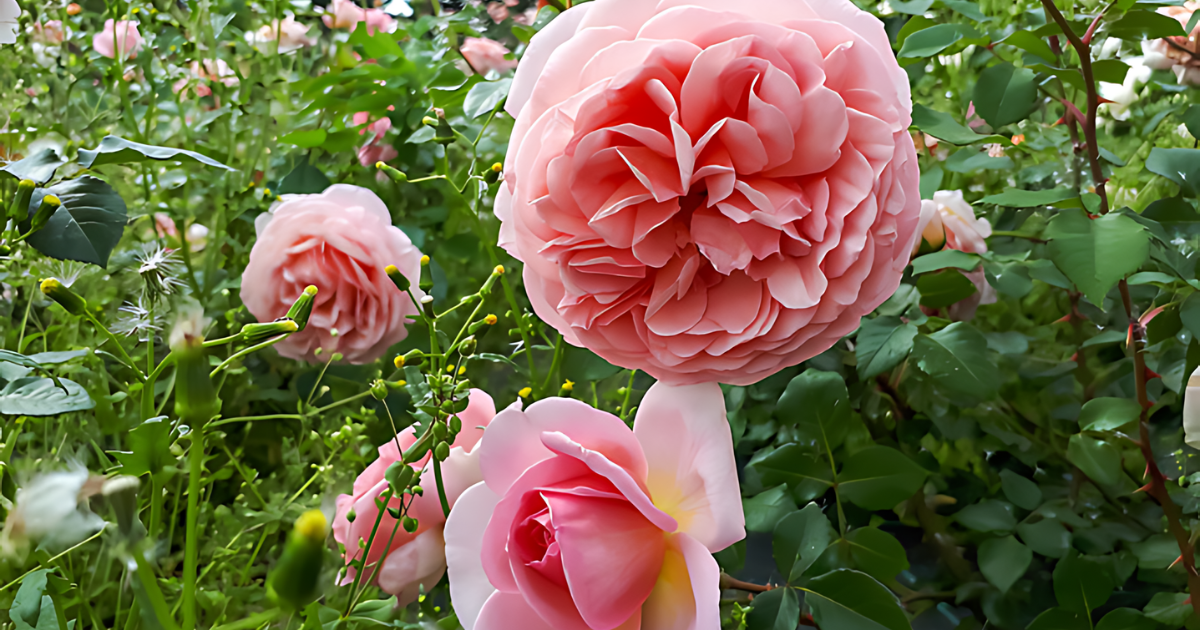
39. Coral Dawn – Climbing rose (Rosa ‘Coral Dawn’)
Mark’s favourite. Blooms and blooms.
Height – 6’ to 12’ (1.8m to3.6m). Spread – 6’ (1.8m). Culture – full sun, tolerates part shade. Showiness Impact – continuous blooms through summer. Hardiness zone: 5.
40. Honey Perfume – Floribunda rose (Rosa ‘JACarque’ HONEY PERFUME)
If you like fragrance, this is your floribunda. Height – 4’ (1.2m). Spread – 3’ (0.9m) Culture – full sun, tolerates light shade Showiness Impact – summer blooms Hardiness zone: 5.
41. Queen Elizabeth – Grandiflora rose (Rosa ‘Queen Elizabeth’)
At one time the worlds most popular rose. What is not to like? One of the best for cutting.
Height – 6’ (1.8m) Spread – 3’ (0.9m). Culture – full sun Showiness Impact – blooms May to first
frost. Hardiness zone: 5.
42. Flower Carpet Rose (Rosa ‘Flower Carpet’)
A family of low growing, floriferous front of the garden performers.
Height – 3’ (0.9m). Spread – 4’ (1.2m) Culture – full sun. Showiness Impact – bloom spring through late fall. Hardiness zone: 5.
43. Double Delight – Hybrid Tea (Rosa ‘Double Delight’)
Mark’s favourite for fragrance. Cut just one and bring indoors to fill a room with the most pleasant summer-time scent.
Height – 4’ (1.2m). Spread – 3’ (0.9m) Culture – full sun, all soil types. Showiness Impact – repeat blooming all summer. Hardiness zone: 6.
44. Peace – Hybrid Tea (Rosa ‘Madame A. Meilland’)
Named after the establishment of the United Nations over 70 years ago. Grow it and make a wish.
Height – 4’ (1.2m). Spread – 3’ (0.9m) Culture – full sun. Showiness Impact – blooms late spring through fall. Hardiness zone: 5.
45. Tropicana – Hybrid Tea (Rosa ‘Super Star’)
Like the name suggests, a reminder of the South Pacific even if you haven’t been there.
Height – 6’ (1.8m). Spread – 3’ (0.9m). Culture – full sun. Showiness Impact – blooms spring to fall. Hardiness
zone: 6.

46. Oso Easy® Double Pink Rose (Rosa x)
Just one variety of a family of low maintenance summer flowering beauties.
Height – 2’ (0.6m). Spread – 2’ (0.6m) Culture – full sun. Showiness Impact – blooms summer and fall. Hardiness zone: 5.
47. Coral Knock Out® (Rosa ‘Radral’)
Well named. Really. Knock your eye out, like Mark did when he planted several in his front garden.
Height – 4’. Spread – 4’. Culture – full sun. Showiness Impact – blooms spring through fall. Hardiness zone: 5.
48. Karl Foerster Feather Reed Grass (Calamagrostis acutiflora)
A widely celebrated 1.5-meter-high soldier for the sunny, formal garden.
Height – 5’ (1.5m). Spread – 3’ (0.9m) Culture – part sun to full sun. Showiness Impact – Dramatic red-bronze flower spikes early to midsummer. Hardiness zone: 5.
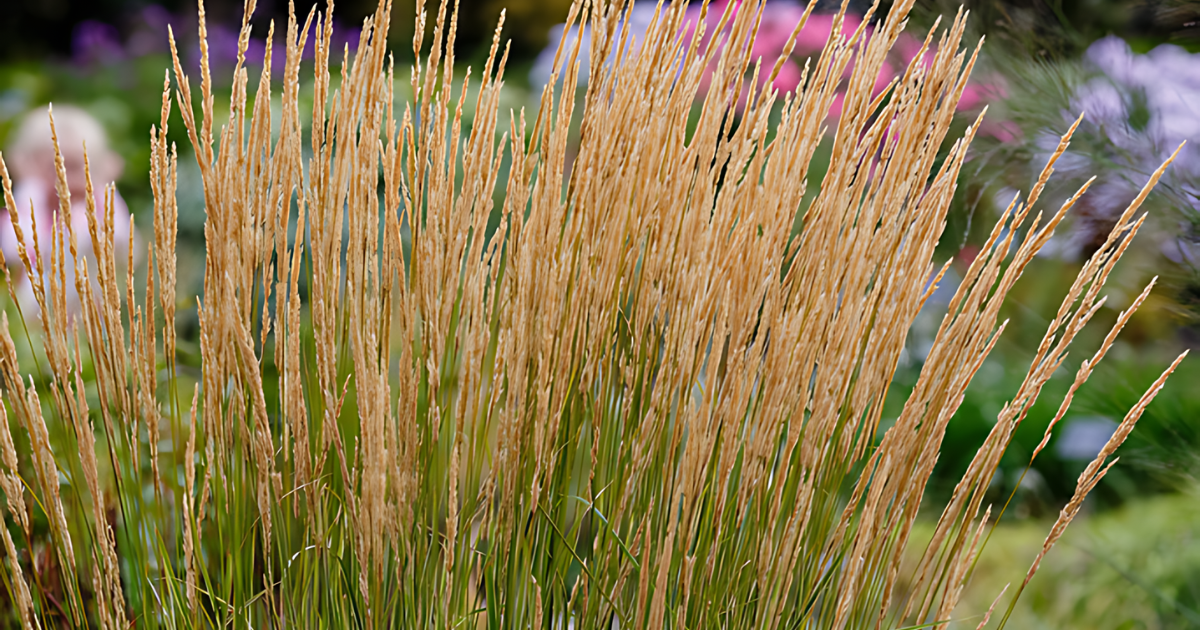
49. Little Bluestem (Schizachyrium scoparium)
A foreground standout.
Height – 3’ (0.9m). Spread – 2’ (0.6m) Culture – part shade to full sun. Showiness Impact – beautiful summer and fall colour. Hardiness zone: 3.
50. Prairie Winds Switch Grass (Panicum virgatum)
Hardy, interesting seed heads.
Height – 6’ (1.8m). Spread – 2.5’ (0.7m) Culture – full sun. Showiness Impact – seedheads in fall. Hardiness zone: 4.
51. Virginia Creeper (Parthenocissus quinquefolia)
A fast-growing native vine that can be invasive. However, where quick cover is needed it is hard to beat. Sun or shade.
Height – 40’ (12m). Spread – 24” (0.5m). Culture – full sun, part sun, shade. Showiness Impact – red fall colour. Hardiness zone: 3.
52. Climbing Hydrangea (Hydrangea anomala ‘var. petiolaris’)
One of our favourite flowering vines: creamy white flat-faced blooms in early summer. Self-clinging. Low maintenance and permanent.
Height – 40’ (12m). Spread – 5’ (1.5m). Culture – part shade to full shade, moist, well-drained soil. Showiness Impact – summer flowers Hardiness zone: 4.
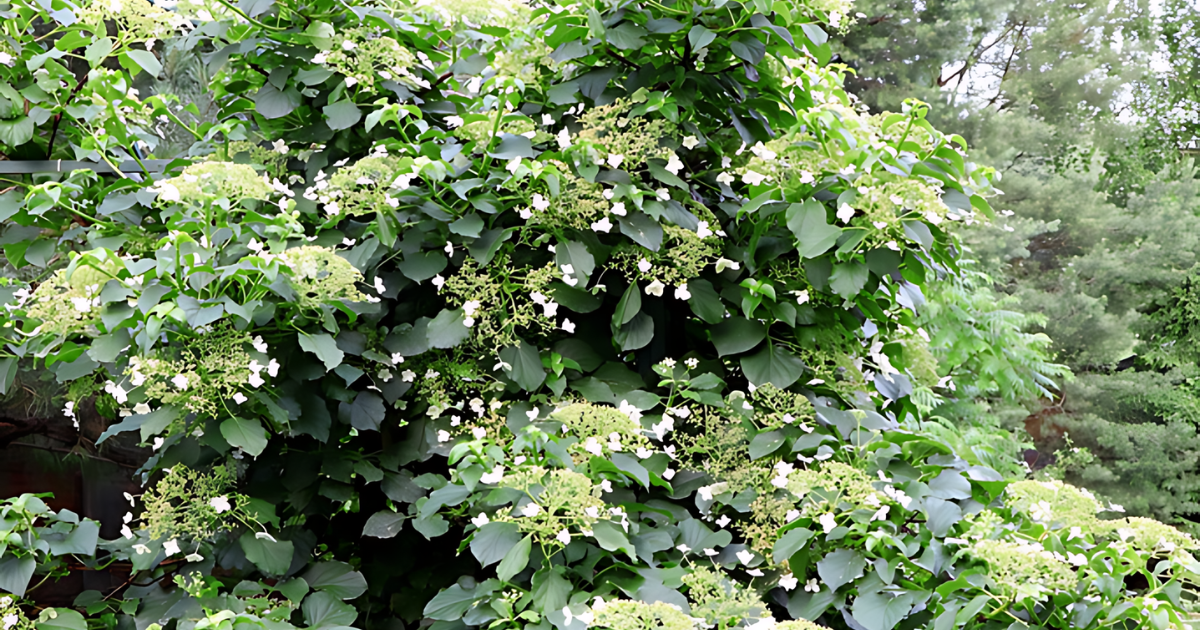
53. American Bittersweet (Celastrus scandens)
The attractive orange fruit is a popular Christmas decorations. Be patient as this plant takes a few years to establish but, in our opinion, is worth the wait.
Height – 20’ (6m). Spread – 6’ (1.8m). Culture – full sun, tolerates dry soil. Showiness Impact – months that looks best. Hardiness zone: 3.
54. Black-Eyed Susan (Rudbeckia hirta)
Both of us have this plant growing in a sunny part of our garden, where it spreads quickly, is reliably hardy in our zone 5 locations. Look for a variety Goldstrum for up to 10 weeks of reliable yellow colour each late summer/fall.
Height – 3’ (0.9m). Spread – 2’ (0.6m). Culture – full sun, tolerates dry soil. Showiness Impact – flowers summer and fall. Hardiness zone: 3.
55. Purple Coneflower (Echinacea purpurea)
Prairie native. Attracts butterflies, native bees while in bloom and small songbirds while in seed. Easy to grow. One of Mark’s top 10! What is not to like?
Height – 4’ (1.2m). Spread – 1’ (0.3m). Culture – part shade to full sun, moderate moisture requirements. Showiness Impact – summer blooms Hardiness zone: 4.

56. Wild Bergamot (Monarda fistulosa)
One of our top choices for attracting hummingbirds.
Height – 4’ (1.2m). Spread – 3’ (0.3m). Culture – part shade to full sun, tolerates most soil and moisture conditions. Showiness Impact – blooms mid to late summer. Hardiness zone: 3.
57. Canada Goldenrod (Solidago canadensis)
As Ben says, “the new milkweed” which is to say, popular with gardeners with a fancy for pollinators of all kinds.
Height – 5’ (1.5m). Spread – 5’ (1.5m). Culture – full sun, well-drained soil Showiness Impact – flowers late summer through fall. Hardiness zone: 3.

58. Spotted Joe Pye Weed (Eupatorium maculatum)
One of the best butterfly attractants. A meadow of Joe Pye Weed is a child’s fantasy come true.
Height – 7’ (2m). Spread – 3’ (1m). Culture – part shade to full sun, prefers moist soil. Showiness Impact – blooms for several weeks in summer. Hardiness zone: 3.
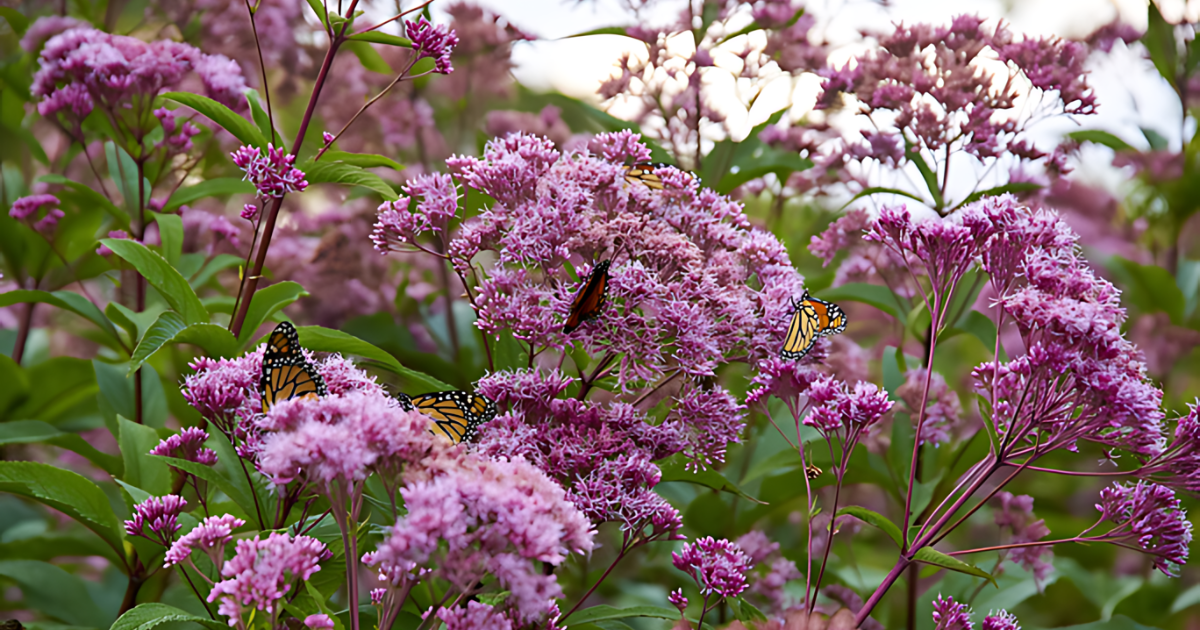
59. New England Aster (Symphyotrichum novae-angliae)
Hardy to Regina, native and one of the few native plants that feature blue flowers in fall.
Height – 5’ (1.5m). Spread – 2’ (0.6m). Culture – part shade to full sun, plant in moist well-drained soil. Showiness Impact – blooms in late summer to early fall. Hardiness zone: 3.

60. Swamp Milkweed (Asclepias incarnata)
Exclusive home to Monarch Butterfly larvae. We need more of both: the butterflies and native milkweed.
Height – 4’ (1.2m). Spread – 3’ (0.9m). Culture – part shade to full sun, moist soil. Showiness Impact – blooms
mid-summer. Hardiness zone: 3.
61. Wild Columbine (Aquilegia canadensis)
Such a welcome addition to our perennial gardens come early summer. Elegant yet hardy.
Height – 2’ (0.6m). Spread – 1’ (0.3m). Culture – part shade to full sun, grow well in rock gardens. Showiness Impact – blooms early spring. Hardiness zone: 3.

62. Wild Ginger (Asarum canadense)
A great shade-loving ground cover.
Height – 0.5’ (0.15m). Spread – 1’ (0.3m). Culture – for shaded areas. Showiness Impact – foliage remains all growing season. Hardiness zone: 3.
63. Wild Geranium (Geranium maculatum)
Another great ground cover, performs well in a wide variety of soil and sun exposure.
Height – 1’ (0.3m). Spread – 1’ (0.3m). Culture – prefers medium to wet conditions, shade, part shade, full sun. Showiness Impact – spring blooms, red fall foliage. Hardiness zone: 3
64. Big Bluestem (Andropogon gerardii)
One of our top picks for native, tall Prairie grasses. Loves the sun.
Height – 7’ (2m). Spread – 2’ (0.6m). Culture – part shade to full sun, tolerates a variety of soil conditions.. Showiness Impact – burgundy seed pods in fall. Hardiness zone: 3.
65. Northern Sea Oats (Chasmanthium latifolium)
Native to the States. The oat-like seed heads are attractive. One of the few popular ornamental grasses that
grows in sun or shade.
Height – 5’ (1.5m). Spread – 2’ (0.6m). Culture – tolerates shade, prefers full sun to part sun. Showiness
Impact – purplish bronze seed heads in fall, leaves turn copper colour after frost. Hardiness zone: 3.
66. Peony (Paeonia spp.)
Showy, stunning colour. Don’t worry about the ants on the flower bud. They are beneficial to the plant.
Height – 3’ (0.9m). Spread – 3’ (0.9m). Culture – full sun or part shade, rich fertile medium moisture,
well-drained soil. Showiness Impact – bloom late spring/early summer. Hardiness zone: 3.
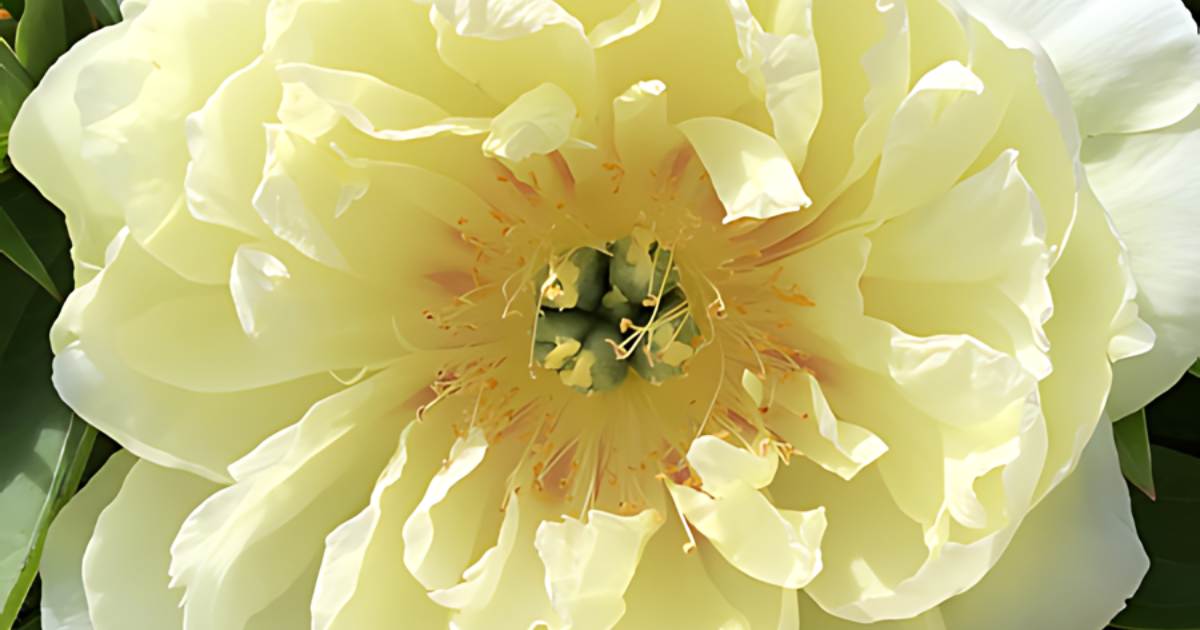
67. Stonecrop (Sedum spp.)
One of the best low-maintenance flowering perennials. We love it for its fall colour and strong attraction to native bees and butterflies.
Height – can be divided into two categories: low-growing and upright sedum. Culture – full sun, part sun, grows well in sandy soil. Showiness Impact – bloom late summer through early fall. Hardiness zone: 3.
68. Semi-Dwarf Apples (Malus domestica)
Choose from a staggering array of varieties after you decide on the qualities you want: a good eating apple? Cooking? Keeping? There is a variety just right for you.
Height – 15’ (4.5m). Spread – 15’ (4.5m). Culture – full sun, prefer fertile well-drained soil. Showiness Impact – spring blooms followed by summer fruit. Hardiness zone: 4.
69. Rhubarb (Rheum rhabarbarum)
A very reliable, mostly insect and disease-free, perennial performer. When you harvest, pull it, don’t cut it and enjoy but leave some leaves to photosynthesize to produce a new crop next year.
Height – 4’ (1.2m). Spread – 4’ (1.2m). Culture – full sun to part shade, soil pH between 6.0 and 6.8, well-drained soil rich in organic matter. Showiness Impact – harvest late spring/early summer Hardiness zone: 3.
70. Asparagus (Asparagus officinalis)
Another reliable winter hardy perennial food plant. And maybe the tastiest when cut ( 3 cm. below the ground) of them all. Insect and disease resistant, so easy to grow “organically”.
Height – 5’ (1.5m). Spread – 3’ (0.9m). Culture – full sun, neutral to slightly acidic soil, moist, well-drained soil. Showiness. Impact – harvest late June. Hardiness zone: 2.
71. Strawberries (Fragaria)
A few secrets to a great strawberry crop is to cover them with straw before winter, remove the straw before the plant’s flower comes in spring and harvest often when fruit is ripe to encourage continued crop. Sun lover!
Height – 1’ (0.3m). Spread – space plants 18” apart, spread through runners. Culture – full sun, soil pH of 6-6.5. Showiness Impact – bloom early summer, harvest summer. Hardiness zone: 2 if covered for the winter.
72. Raspberries (Rubus spp.)
Choose from “autumn bearing” and “July bearing.” Prairie hardy, easy to grow. often produces a great crop in
2nd year.
Height – trim to 4-5’ (1.2m to 1.5m). Spread – plant 2’ (0.6m) apart, and remove suckers growing outside of rows. Culture – full sun, good air circulation, and well-drained soil with a pH of 6.0-7.0. Showiness Impact – bloom early summer through late summer. Hardiness zone: 3.
Trees (plants 76 to 80) are the majestic guardians of the garden, offering shade, beauty, and a sense of tranquillity.
73. Tulip tree (Liriodendron tulipifera)
A Carolinian native. Incredible orange, tulip-shaped flowers in June. Unusual leaf shape also. Mark has five on his property and doesn’t even think of removing one of them.
Height – 100’ (30m). Spread – 40’ (12m). Culture – full sun, acidic, loamy, moist soil. Showiness Impact – blooms May and June, golden yellow foliage in fall. Hardiness zone: 4.
74. Red maple (Acer rubrum)
Native, hardy, fast-growing, brilliant fall (red) colour. THIS is what we mean when we talk about red maples, not to be confused with the Norway “Crimson King” that never changes colour.
Height – 70’ (21m). Spread – 50’ (15m). Culture – full sun to part sun, grows in average, moist to wet, well-drained soil. Showiness Impact – showy fall colour. Hardiness zone: 3.

75. White oak (Quercus alba)
Mark’s favourite tree. So named for its white wood vs, say, red oak. Slow to start but grows quickly after its third or fourth year.
Height – 80’ (24m). Spread – 80’ (24m). Culture – full sun, grows best in well-drained sandy soil, resistant to
salt spray. Showiness Impact – foliage turns russet red in fall. Hardiness zone: 3.
76. Eastern Redbud (Cercis canadensis)
One of our favourite native, Carolinian trees. Have a good look at the blossoms on new AND old wood. And the spring colour is a knockout. Nature is so clever.
Height – 30’ (9m). Spread – 35’ (10.5m). Culture – full sun, part sun, moist, welldrained soil. Showiness Impact – early spring blooms. Hardiness zone: 4.
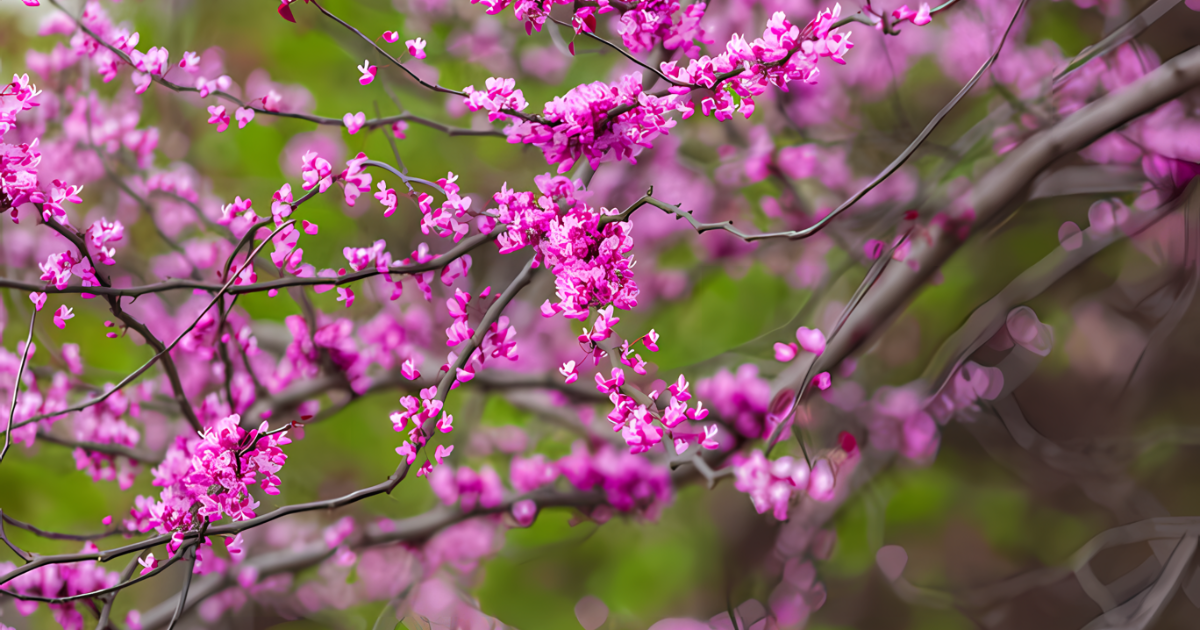
77. Kentucky Coffeetree (Gymnocladus dioica)
The common name is derived from using the beans as a coffee substitute by early European settlers in North
America.
Height – 80’ (24m). Spread – 50’ (15m). Culture – full sun, adapts to a wide range of soils. Showiness Impact – showy bark adds seasonal interest from fall through spring. Hardiness zone: 3.
Mark Cullen is an expert gardener, author, broadcaster and tree advocate
and holds the Order of Canada. His son, Ben, is a fourth-generation
urban gardener and a graduate of the University of Guelph and Dalhousie
University in Halifax. Follow them at markcullen.com, @MarkCullen4
(Twitter) and @markcullengardening (Facebook) and look for their latest book, Escape to Reality.
Follow them at markcullen.com, @MarkCullen4, facebook.com/markcullengardening and biweekly on Global TV’s national morning show, The Morning Show.




